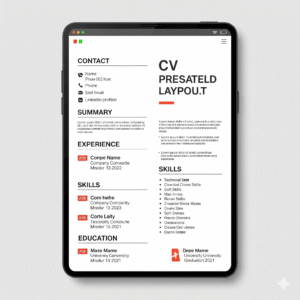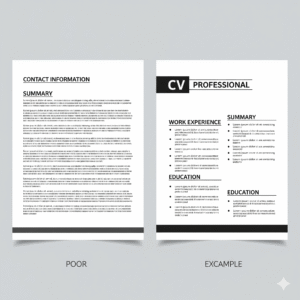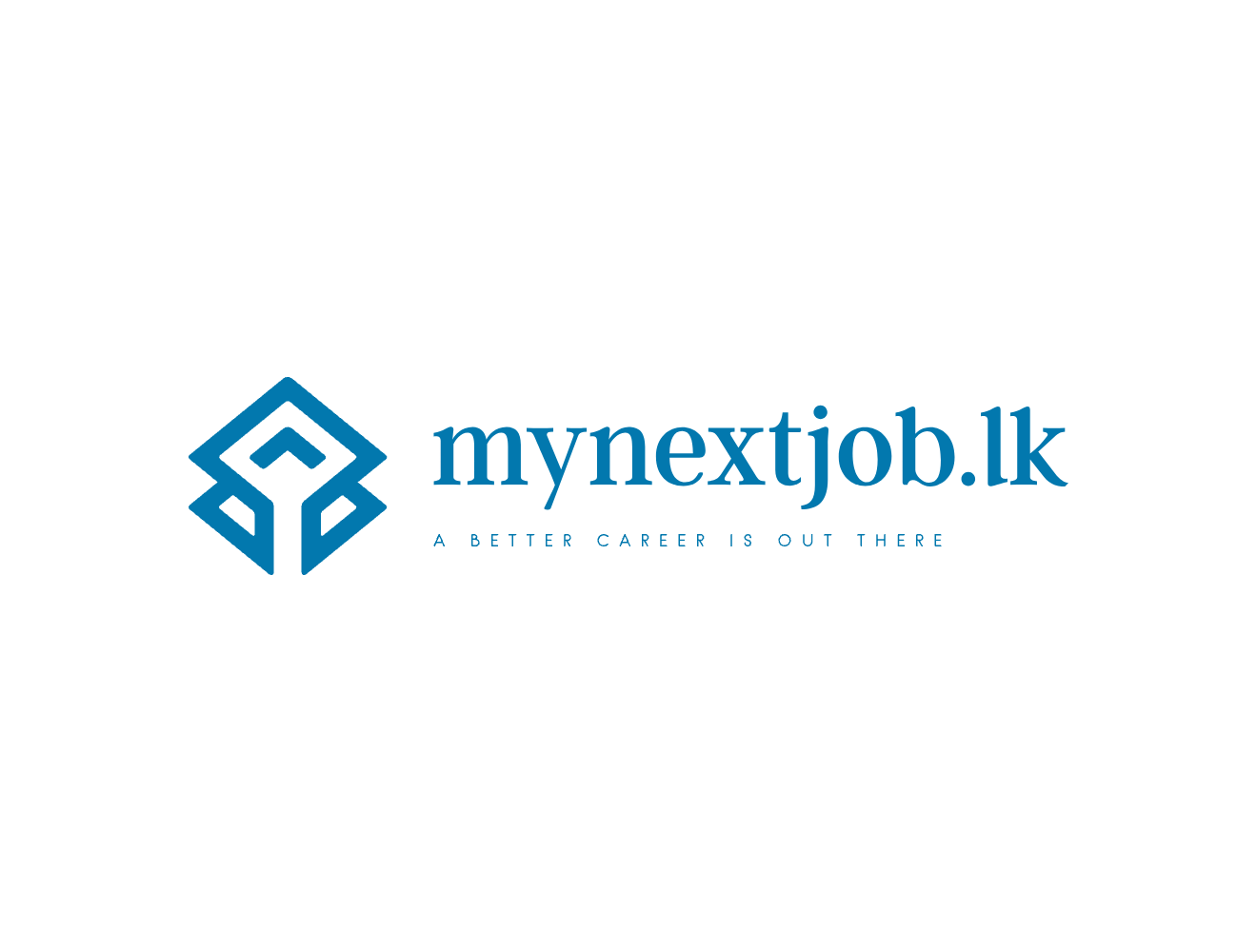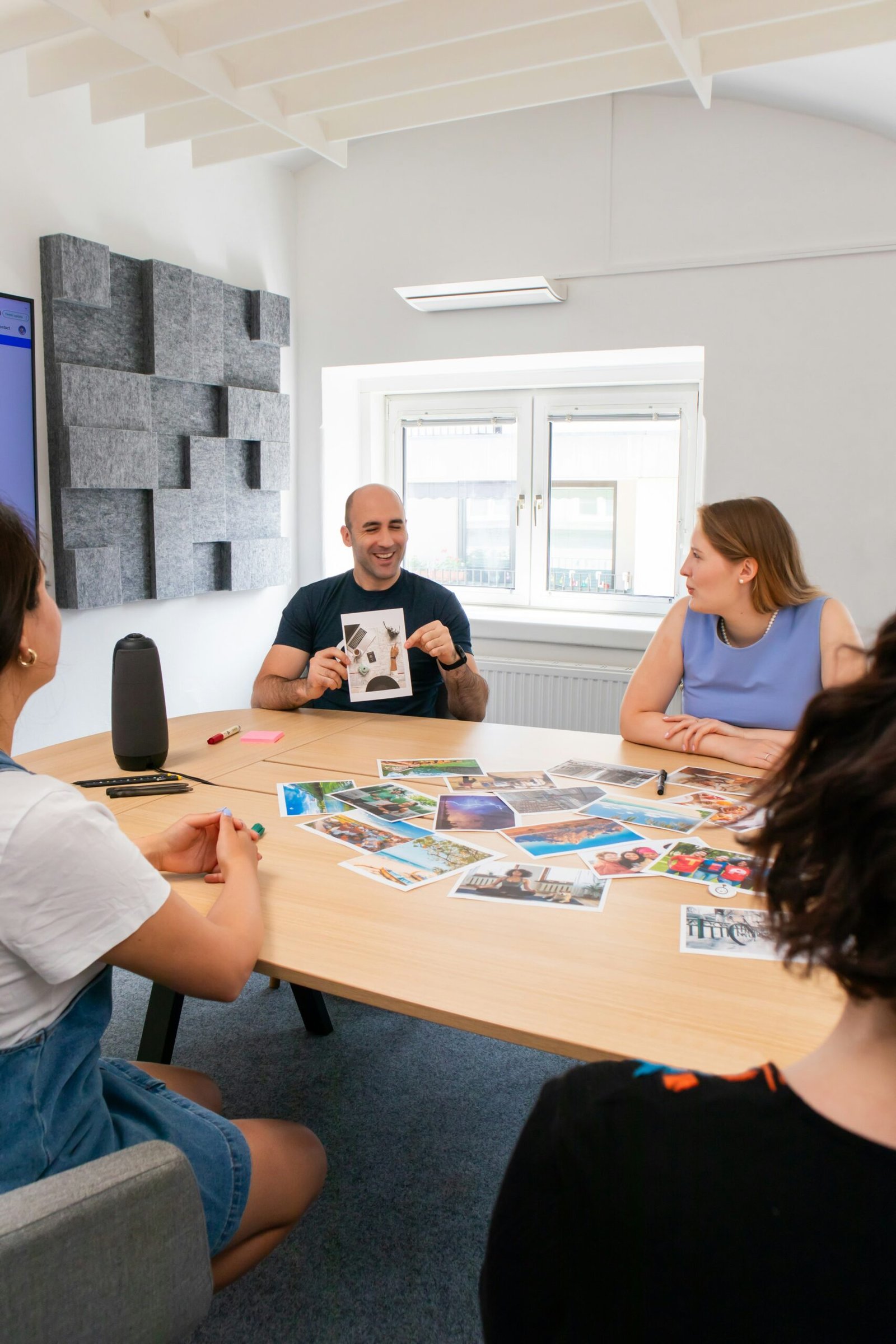In today’s competitive job market, your Curriculum Vitae (CV) is more than just a list of your past jobs—it’s your personal marketing document. It’s your opportunity to make a compelling first impression and stand out from a sea of applicants. A well-written CV doesn’t just inform; it persuades.
- 1. Understanding the Purpose of Your CV
- 2. The Key Sections: What to Include and How to Structure It
- 3. The Power of Keywords and Quantifiable Achievements
- Beating the Applicant Tracking System (ATS)
- The Power of Numbers
- Quantify your achievements by focusing on:
- 4. The Importance of Design and Formatting
- 5. Common CV Mistakes to Avoid
- Conclusion
This comprehensive guide from mynextjob.lk, a leading platform in Sri Lanka, will provide you with essential CV tips and a detailed approach to resume writing that ensures your career documents don’t just get read, but get you noticed.
1. Understanding the Purpose of Your CV
Before you even start writing, it’s vital to understand what a CV is for. Its primary purpose is not to get you a job, but to get you an interview. It’s a strategic summary designed to capture the recruiter’s attention, highlight your most relevant qualifications, and entice them to learn more.
Tailor-Made vs. One-Size-Fits-All
This is perhaps the most crucial of all CV tips: A generic CV rarely succeeds. Each job application requires a tailored approach. Research the company and the specific role, then customize your CV to reflect how your skills and experiences directly align with their needs. This personalization is key to a powerful professional profile.
2. The Key Sections: What to Include and How to Structure It
A standard CV follows a clear, logical structure that allows recruiters to quickly find the information they need. Remember to present all information in reverse chronological order, starting with your most recent experience.
- Contact Information: Keep it professional and simple. Include your full name, phone number, a professional email address, and a link to your LinkedIn profile. Avoid personal details like age, marital status, or nationality unless specifically required.
- Professional Summary or Objective: This is your elevator pitch. A 3-4 sentence paragraph at the top of your CV that summarizes your skills, experience, and career goals. It should be tailored to the job description and immediately tell the recruiter why you are a great fit.
- Work Experience: This is the most important section. For each role, list your job title, the company name, location, and the dates of employment. Use strong, action-oriented bullet points to describe your responsibilities and, more importantly, your achievements.
- Education: List your degrees, diplomas, and relevant certifications. Include the name of the institution, the location, and the year of graduation.
- Skills: Create a dedicated section for your skills. Categorize them into hard skills (technical skills like software proficiency, languages) and soft skills (interpersonal skills like communication, leadership). This section is critical for Applicant Tracking Systems (ATS).
3. The Power of Keywords and Quantifiable Achievements
A great CV doesn’t just list what you did; it proves your value. This is where quantifiable achievements and the strategic use of keywords come into play.
 Beating the Applicant Tracking System (ATS)
Beating the Applicant Tracking System (ATS)
Most large companies and recruitment agencies use an Applicant Tracking System (ATS) to scan and filter CVs. The ATS looks for specific keywords from the job description. If your CV doesn’t contain these words, it might be automatically rejected before a human ever sees it.
Actionable Tip: Read the job description carefully. Highlight key skills, qualifications, and industry jargon. Incorporate these exact keywords naturally into your CV, especially in your professional summary and skills section.
The Power of Numbers
Instead of saying “Managed social media accounts,” a strong CV says “Managed social media accounts, growing engagement by 40% in six months.” Quantifying your accomplishments provides concrete evidence of your impact.
Quantify your achievements by focusing on:
- Money: Did you save the company money or increase revenue? (e.g., “Reduced overhead costs by 15%”)
- Time: Did you make a process more efficient? (e.g., “Streamlined the reporting process, saving 10 hours of work per week”)
- Volume: How many projects did you handle? How many clients did you serve? (e.g., “Managed a portfolio of 50+ key clients”)
- Percentage: Use percentages to show improvement. (e.g., “Increased sales by 25% over a 12-month period”)
4. The Importance of Design and Formatting
While content is king, a clean, professional design is what makes a CV readable and memorable. A recruiter spends an average of 6-8 seconds on a CV, so every second counts.

- Choose a Professional Font: Stick to classic, readable fonts like Calibri, Arial, or Times New Roman. Avoid decorative or unconventional fonts that can be difficult to read.
- Use White Space: Don’t crowd your CV. Use generous margins and spacing between sections. White space makes the document look clean and easy to scan.
- Use Headings and Bullet Points: Clearly defined headings and bullet points break up the text, making your information easy to digest at a glance.
- Proofread, Proofread, Proofread: A single typo can be a red flag for a recruiter, suggesting a lack of attention to detail. Use a spelling and grammar checker, but more importantly, read your CV out loud or have a trusted friend review it.
5. Common CV Mistakes to Avoid
Knowing what not to do is just as important as knowing what to do.
- Using a Generic CV: As mentioned earlier, a one-size-fits-all approach is a surefire way to get your application overlooked.
- Including a Photograph: In most corporate cultures, especially in Western countries, including a photograph is discouraged as it can introduce unconscious bias. It’s best to avoid it unless explicitly requested.
- Lying or Exaggerating: Never lie on your CV. You will be found out, either in the interview or once you start the job. Honesty is always the best policy.
- Passive Language: Use strong, active verbs like “managed,” “developed,” “implemented,” and “led” instead of passive phrases like “responsible for.”
- Unprofessional Email Address: Your email address should be a simple combination of your name (e.g., janedoe@email.com). Avoid anything unprofessional or juvenile.
Conclusion
Writing a CV that gets you noticed is a skill that requires strategy and attention to detail. By thinking of your CV as a marketing document, tailoring it to each specific job, using quantifiable achievements to prove your value, and avoiding common mistakes, you can significantly increase your chances of landing that coveted interview. This is your first step on the path to a rewarding career transformation, so make it count.


 Beating the Applicant Tracking System (ATS)
Beating the Applicant Tracking System (ATS)








